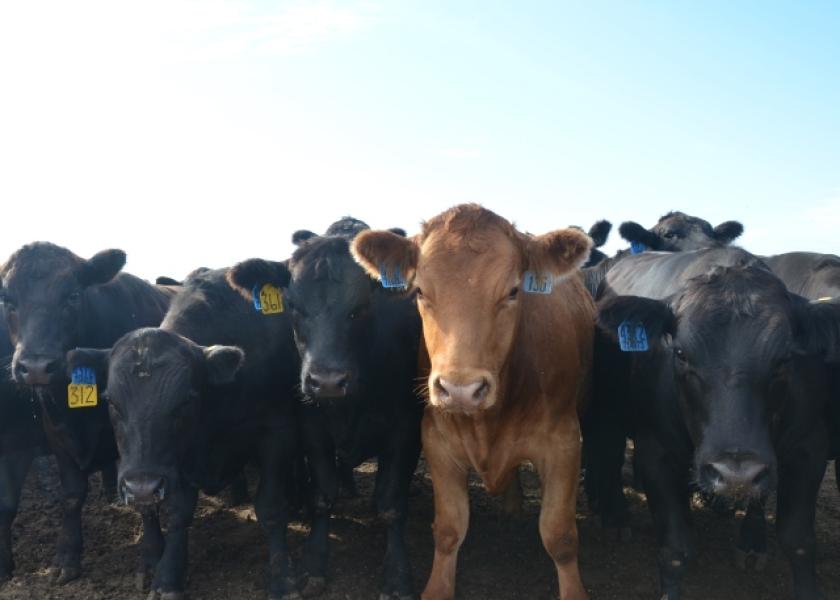Cattle Price Considerations for 2018 in South Dakota

In the latest USDA Cattle Report the total cattle inventory in South Dakota as of January 1, 2018 is up from last year, suggesting more cattle to manage and market. However, the changes across classes were not consistent. Thus, benchmarks may prove useful for pricing and marketing decisions. Cash, futures and basis levels are necessary to evaluate expected profits. Common benchmarks are available in Monthly Cattle Prices and Basis Levels.
Total Inventories
Consistent with the trend in total inventories, in South Dakota there are more cattle on feed in 2018 versus 2017 in both small and large feedlots. A fed cattle benchmark is from Sioux Falls Regional Livestock (SFRL), the only AMS-reported location with fed cattle sales in South Dakota. A pronounced seasonal pattern was evident in 2017 for the SFRL and other fed cattle prices.
Price & Basis Levels
The basis, the difference between a cash price and the nearby futures price, continues to reflect the seasonal cash price pattern. A five-year average basis is long enough to smooth out annual aberrations and short enough to adjust to changes in seasonality and local market conditions. The latest 5-year average fed cattle basis for South Dakota, by month, ranges from $7.59 per cwt. in May to -$4.31 per cwt. in December (Figure 1). Expected basis should be adjusted if a change in seasonality is anticipated.
The SFRL prices and basis levels reflect steers grading Choice with yield grades of 2-4, spanning the par yield grade 3 level in the futures specifications. The par futures specification is for 60% Choice and 40% Select steers weighing 1,050 to 1,500 pounds or heifers weighing 1,050 to 1,350 pounds until October 2018 when the mix changes to 65% Choice and 35% Select. A futures discount remains for deliveries on October contracts to Iowa, Minnesota and South Dakota locations. In recent months, steers and heifers sold in direct markets in Iowa and Minnesota have been at the high end of the deliverable weight range.
Inventory Levels
Inventory levels for beef cows and beef replacement heifers were both higher than a year ago. The calf crop was higher also. The prospect for 2018 is for another larger calf crop in South Dakota. Specific to cows, the price of cull animals follows the price of fed cattle but with substantial variation over time. During the past five years the cull cow price has averaged 64% of the nearby live cattle futures price and ranged from 51% to 77% (Figure 2).
Despite a larger calf crop, larger on-feed and replacement inventories resulted in a smaller inventory of feeder cattle outside of feedlots. Dry pasture conditions early in 2017 do not seem to have resulted in a smaller aggregate cow herd, but may have resulted in more cattle placed on feed. Thus, there may be fewer yearlings available locally to graze pastures this summer. Late spring would be a typical time for calves or yearlings to be sold or transferred to pastures. In late summer, these animals would enter the feeder cattle market. Late fall would be the other typical time for larger volumes of calf sales which would be priced off the early 2019 feeder cattle market.
Feeder Index
Since November 2016 feeder cattle futures have settled to the feeder index reflecting feeder steers weighing 700-899#. Prior to that, the feeder index reflected steers weighing 650-849#. The basis for South Dakota feeder cattle seems little changed through 2017, as the relative quality did not change. The basis on calves, which could be cross-hedged against feeder cattle contracts, should reflect the change in weight differences since late 2016. With a greater difference in weights, a wider or larger basis would be expected.
Figure 1. South Dakota Fed Cattle Basis
Figure 2. Cull Cow Prices Relative to Live Cattle Futures







